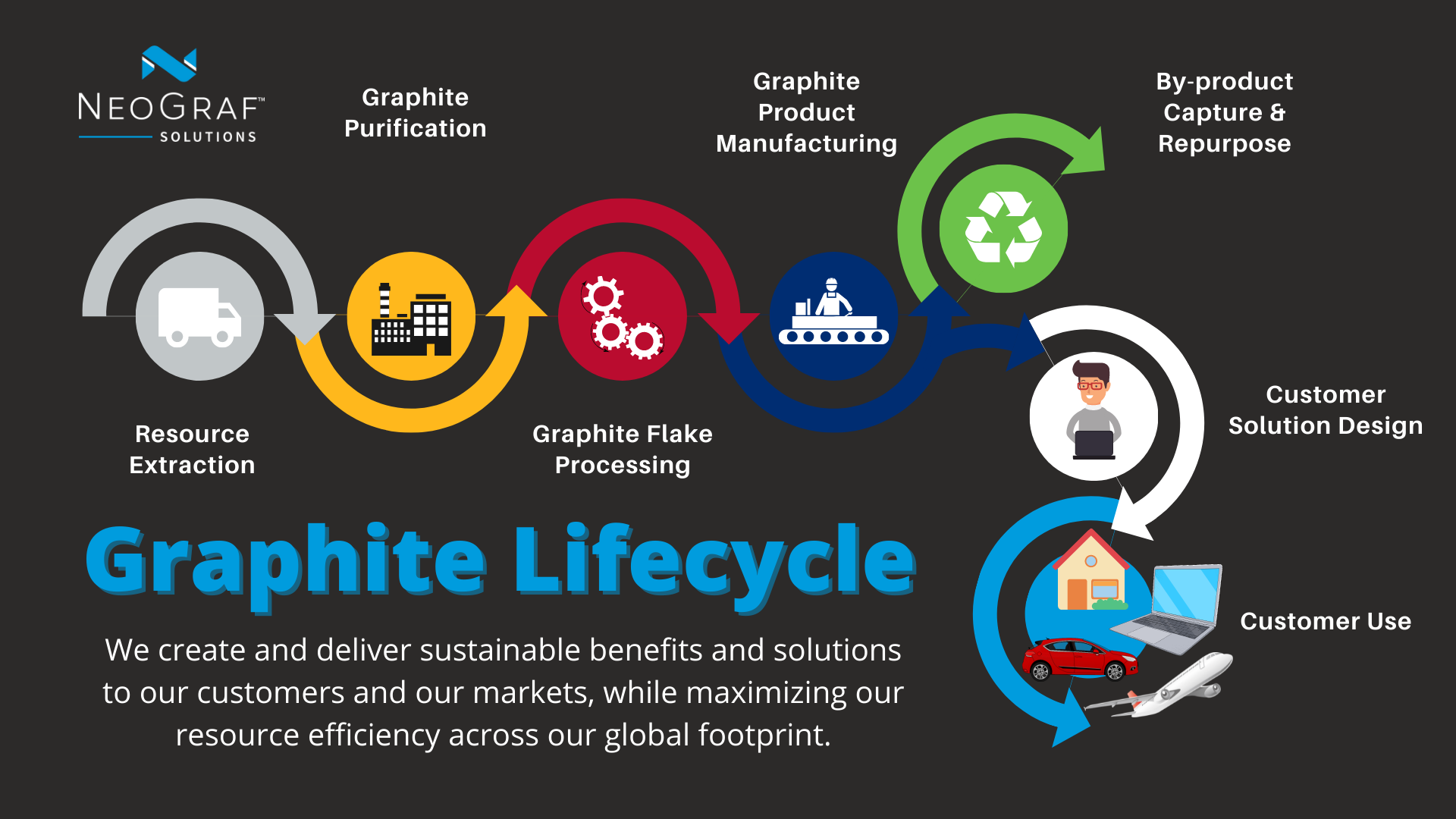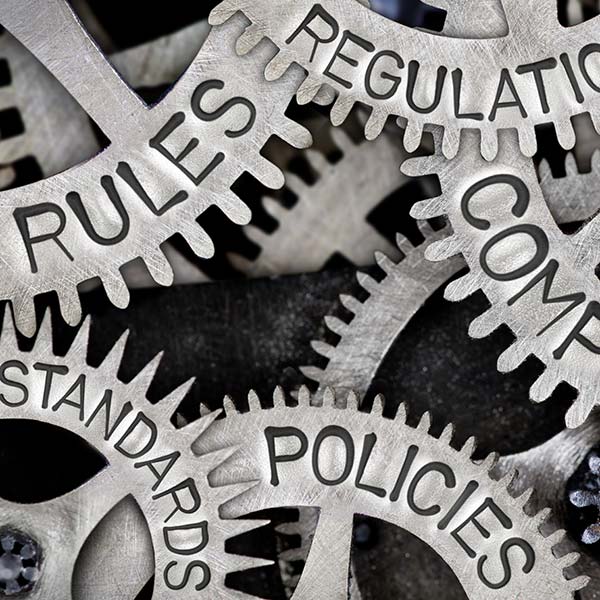Health, Safety and Environmental Management Systems
Health, Safety and Environmental management systems are designed, implemented and maintained at all management levels to provide reasonable assurance that NeoGraf complies with governmental and internal requirements. Areas that are addressed include, but are not limited to: management leadership, accountability, planning and resources, goals and measurements. Control mechanisms (e.g., audits, reviews, inspections, monitoring, and sampling) are designed to evaluate programs, measure progress and provide reasonable assurance that:
- Products and operations comply with applicable governmental and internal requirements.
- Deficiencies are identified, prioritized and properly corrected.
- Hazards are routinely identified, their risk quantified and prioritized with suitable controls to eliminate or minimize the hazards then put into place.
Emergency Preparedness
Written emergency preparedness plans and/or procedures exist to address reasonably foreseeable emergency situations at NeoGraf locations and to provide appropriate hazards and emergency preparedness information to employees, external emergency response agencies and the community.
On-Site and Off-Site Contractors
NeoGraf employs programs for on-site and off-site contractors’ selection. These programs provide reasonable assurance that all contractors are technically and financially capable of performing their work in compliance with applicable health, safety and environmental requirements.
Change Management
Procedures have been developed, implemented and are being maintained to ensure that an appropriate level of review is conducted prior to physical, process or procedural changes. Reviews identify and address personnel health, safety, process and/or environmental issues that may arise as a result of the change.
Personnel Safety
Programs exist and are designed to enable employees to perform their work-related responsibilities safety. Areas that are addressed include, but are not limited to:
- Personal protective equipment
- Vehicle safety
- Employee information and Training
Potentially Hazardous Work
Programs exist and are designed to protect employees exposed to potentially hazardous work conditions including, but are not limited to:
- Entry into confined spaces
- Crane operations near power lines
- Cutting, welding or introduction of an ignition source into a restricted area
- Digging and excavation work
- Potentially hazardous electrical switching
- Performing elevated work
Equipment Lockout and Tagging
Programs exist and are designed to protect employees working on or in proximity to equipment with the potential for unexpected operation, movement, release of energy or release of hazardous materials. Occupational Health Programs exist and are designed to protect employees from overexposure to physical, chemical and biological agents in the workplace. Areas that are addressed include, but are not limited to:
- Exposure monitoring and reduction
- Hazard communication
- Hearing conservation
- Respiratory protection
- Sanitation
- Smoking
Air Emissions
An air assessment exists and includes descriptions of local ambient air quality, governmental classifications and requirements, and any other relevant information. The inventory and assessment are evaluated to determine whether existing control measures are adequate to prevent planned or potential unplanned air emissions from creating a potential liability, significantly impairing the ambient air quality or adversely affecting the health or safety of employees and the public. This takes into consideration at least the following issues:
- Compliance with local laws and regulations
- Potential health (acute and chronic) or safety impacts to neighboring communities
- Damage to the environment, including impairment to visibility, negative impact on agriculture/crops or local surface water bodies, ozone depletion, etc
- Potential increased public awareness, regulatory scrutiny or other liabilities, due to dust, odors, noise or other visible or readily detectable emissions that could create a public nuisance
Waste Management
A current waste inventory exists for each NeoGraf location. Explanations of significant changes are tracked for the location’s waste inventory. These include: changes in generation rate for the waste stream; changes in the waste management contractor used to manage the waste stream; and, changes in the waste site used to treat, store, dispose or recycle the waste stream.
Groundwater Protection
A groundwater assessment exists for all NeoGraf locations identifying past and/or present activities that have had or have the potential for adversely affecting groundwater quality. The assessment contains descriptions of local groundwater hydrology, present and prospective groundwater uses, existing groundwater quality, governmental classifications and requirements, and any other relevant information. The inventory and assessment are evaluated to determine if location activities have resulted in releases which have, or are likely to have, adversely affected groundwater quality.
Surface Water Protection
Surface water assessments exist and include descriptions of surface water volumes, flows, existing qualities, present and prospective uses, governmental classifications and requirements, and any other relevant information. The inventory and assessment are evaluated to determine if current planned or potential unplanned discharges to surface waters from normal operations could be adversely affecting employees, the public or the environment. Appropriate corrective actions, such as remedial/control measures, are promptly implemented when it is determined that there is a current or likely potential adverse effect on surface waters due to discharges from normal operations.
Pollution Prevention
Written waste minimization and release reduction programs are designed to take into account the health and safety of employees and the public, the potential impact on the environment, and community concerns. Key elements of the programs include:
- Initial evaluation of location air, waste, and water inventories and pollution prevention practices at each step of the operation where pollutants are generated or released. The evaluation is reviewed annually and updated, as appropriate.
- Identification of preferred waste and release reduction options including first, source reduction; second, recycling/beneficial reuse; and third, treatment.
- Assessment of waste minimization and release reduction opportunities in research and design of new or modified facilities, processes and products.
- Establishment of priorities, goals and written action plans for ongoing reduction of wastes and releases to air, water and land, taking into account technical and economic feasibility.
Occupational Medicine
Programs exist to protect, evaluate and maintain the health of NeoGraf employees through a program of occupational medicine practices and services, while at the same time preserving the privacy rights of our employees. These include:
- Provide occupational medical services for all employees that emphasize prevention and health promotion, as well as rehabilitation and treatment designed to reduce disability time resulting from accidents and illnesses.
- Provide medical evaluation programs for determining an employee/applicant’s fitness for duty, the health status of employees exposed to identified health hazards and the need for preventative measures to protect health.
- Maintain the confidentiality of medical records according to laws, regulations, and applicable standards.
- Conduct epidemiology investigations, when indicated, to identify potential health hazards that could affect employees, customer’s employees or the community at large.
Site Security
Each NeoGraf location has developed, implemented and maintains security programs that provide on-site security measures designed and implemented to:
- Protect employees who work at the site.
- Protect community citizens and visitors, who may enter the property, from injury or illness.
- Protect location assets from theft or harm.
- Protect proprietary or confidential information and technology





